Seasons – July 2021
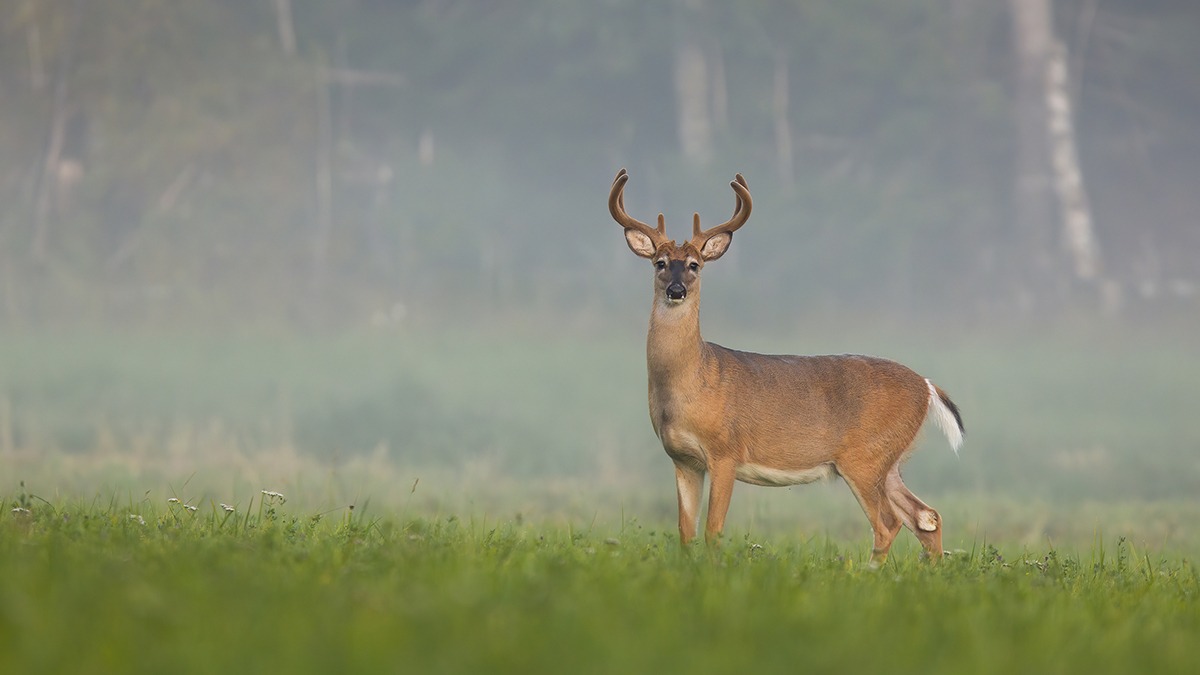
From the Plateau Land & Wildlife Management Team
Though the hunting season is not yet upon us, Summer is the perfect time to be conducting your wildlife management activities for white-tailed deer. Many of you have had the joy of seeing fawn on your property this spring! An important part of managing for these deer and fawn is providing a quality habitat that they can live and thrive in.
So as you relax and soak up this hot Texas sunshine, enjoy this issue of Seasons full of considerations for managing native deer. Read articles ranging from deer management on high-fenced properties in the Hill Country, how and when to complete deer surveys, considerations for disclosing if there’s anthrax on a property, and more!
We hope you enjoy the read and everything this summer has to offer, and if there’s any way Plateau can help you protect, enhance or better enjoy your land during this special season, just give us a call. We’ll be here when you need us.
Until next Seasons,
The Plateau Team
Table of Contents
Importance of Proper Deer Management on High-Fenced Properties in the Hill Country
Wildlife Management Activity Reminder: Deer Surveys
A Recap of the 87th Texas Legislative Session
Service Spotlight: Summer Webinars
A Health Hazard Consideration When Buying & Selling Property
Field Notes: Pictures & Highlights of Properties in Wildlife Management
News for Texas Landowners
Importance of Proper Deer Management on High-Fenced Properties in the Hill Country
By Kyle Lassiter, Staff Biologist II, Associate Wildlife Biologist, and Registered Property Tax Consultant for Plateau Land & Wildlife
Some people often see high fencing a property as a cure-all for managing deer populations to their liking but don’t always realize the responsibility that comes with it. Properly managed high-fenced properties can often produce impressive trophy bucks and overall healthy and productive populations. However, if not managed properly it can create just as many problems, if not more than it does benefits. If you choose to high fence, the herd that used to have free roam over a wide area has become a captive herd and it is now your responsibility to ensure they have quality habitat, food, and resources provided to them every day.
Most of the Hill Country already has a white-tailed deer overpopulation issue. Confine them to an enclosed area, allow them to overpopulate and those effects can become exacerbated quickly. Competition for resources among deer in overpopulated areas increase, putting extra pressure on some and often resulting in poorer antler and body conditions. Eventually, the overall habitat quality and diversity will decrease and plant communities will suffer. These plant communities are a landowner’s most important asset. Diverse, quality plant communities not only benefit deer populations but also songbirds, small mammals, quail, turkey, and all other wildlife that may be utilizing the property. With healthy rangelands you will have more diverse plant life and wildlife populations, superior hydrologic functioning (less runoff and erosion, more infiltration, higher spring flows), and a more aesthetically pleasing property.
Population Management & Recommended Densities
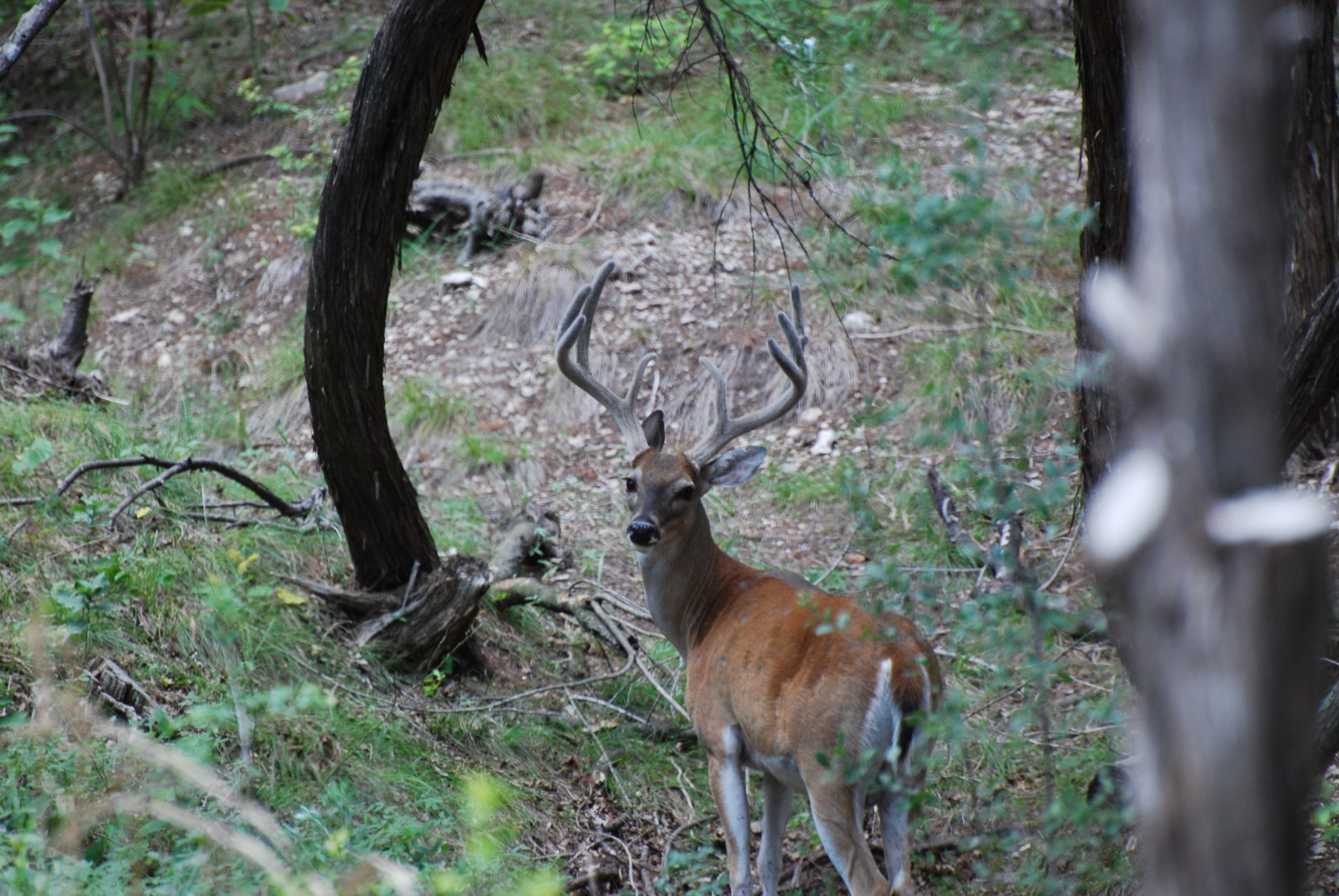 Proper population management is essential not only to a healthy habitat but also to improving herd quality, i.e., fawn crop, average body weight, and antler size. If left improperly controlled, populations will eventually increase until the habitat becomes limited, resulting in decreases in the overall quality of the herd. It is important to be aware of the current densities occurring on your property for proper population management. The recommended white-tailed deer herd density for a well-managed, seasonally hunted Hill Country property in good condition should be approximately 10-15 acres-per-deer. Mixed native-exotic herds are more complicated depending on the type of exotics and dominant vegetation you have. Exotics that are primarily grazers can complement white-tailed deer, but others will compete directly with them. Maintaining optimal mixed-herd sizes, much like appropriate livestock stocking rates, will help sustain the health of a property ensuring that it will continue to provide high-quality forage for the benefit of other wildlife species.
Proper population management is essential not only to a healthy habitat but also to improving herd quality, i.e., fawn crop, average body weight, and antler size. If left improperly controlled, populations will eventually increase until the habitat becomes limited, resulting in decreases in the overall quality of the herd. It is important to be aware of the current densities occurring on your property for proper population management. The recommended white-tailed deer herd density for a well-managed, seasonally hunted Hill Country property in good condition should be approximately 10-15 acres-per-deer. Mixed native-exotic herds are more complicated depending on the type of exotics and dominant vegetation you have. Exotics that are primarily grazers can complement white-tailed deer, but others will compete directly with them. Maintaining optimal mixed-herd sizes, much like appropriate livestock stocking rates, will help sustain the health of a property ensuring that it will continue to provide high-quality forage for the benefit of other wildlife species.
Sex ratio can also play an important role in the proper management of deer. In an ideal world, you would want a sex ratio somewhere around 1 to 2 does-per-buck for a sustainable herd. If there is an abundance of does but very few breeding bucks, it can result in negative impacts for the herd. When the does-per-buck ratio is much higher, there is a high possibility that a receptive doe will not be bred when she first experiences estrus (becomes sexually receptive) in the fall. If a doe isn’t initially bred, she will come out of estrus temporarily but will experience estrus multiple times during the rut until she is bred. If the doe is not bred until the end of the rut, the resulting fawns will be born much later than if they had been conceived near the beginning of the doe’s estrus cycle. Greater stress is then put on the doe and the fawns will typically be smaller than others born in the same year class. More typical than not, a late-season fawn will be undersized.
If doe-per-buck ratios are closer to desired ranges it can help improve the overall body conditions of the herd as well as encourage breeding competition between bucks so that the strongest and largest bucks are the ones that end up breeding with the does. Keep in mind that one buck can impregnate multiple does. If there are substantially more does than bucks, breeding competition will be low and a poor quality buck can potentially breed with multiple does lowering the overall herd quality. Also, the overall population growth potential will be extremely high.
These densities and ratios can often be difficult to achieve, especially in mixed-herd populations, as you are adding more breeding populations that need to be actively managed and controlled in addition to white-tailed deer populations. Not being able to harvest enough animals required to meet desired densities every year is an understandable and often expected occurrence, and should not be discouraging. Management and control efforts of any kind to reduce the population size is an ongoing process toward long-term goals of healthy ungulate herds and habitat. Should any difficulty be encountered in meeting these goals, the majority of hunting efforts should be strongly concentrated toward does in order to help reduce sex ratios and limit an undesirable high productivity rate.
With all this in mind, it is very important to have one or more census activities to get proper estimates and keep track of trends and activity within the populations. Camera and/or spotlight surveys can be conducted every year in order to identify and analyze population trends as well as determine the efficacy of applied management practices. Harvest records, stand counts, and incidental observations can be kept and diligently maintained in order to detect changes, measure progress, evaluate management success, and predict future needs. Daytime incidental observations are an excellent way to supplement and improve the accuracy of other survey estimations. Monitoring browse pressure on key food plants can indicate if the habitat can support the population. The results from these activities are essential to maintaining and managing a healthy population.
Will supplemental feeding help if I have too many deer?
Supplemental feeding is often seen as a quick fix to overused land but can instead intensify the degradation of the surrounding habitat, especially around feeding locations on a high-fenced property. If the property becomes overpopulated and overused, supplemental feeding alone will not work. Deer will often visit these feeding sites more often than usual and feed on the surrounding vegetation, resulting in the local degradation of habitat. This local degradation can increase less desirable or invasive plants as the deer reduce the competitive ability of the native plants. To try and minimize the negative aspects of supplemental feeding, you can move the location of your feeding stations periodically which will allow the surrounding habitat to recover from excessive browsing.
Can having exotics on a high-fenced property affect my Wildlife Management valuation?
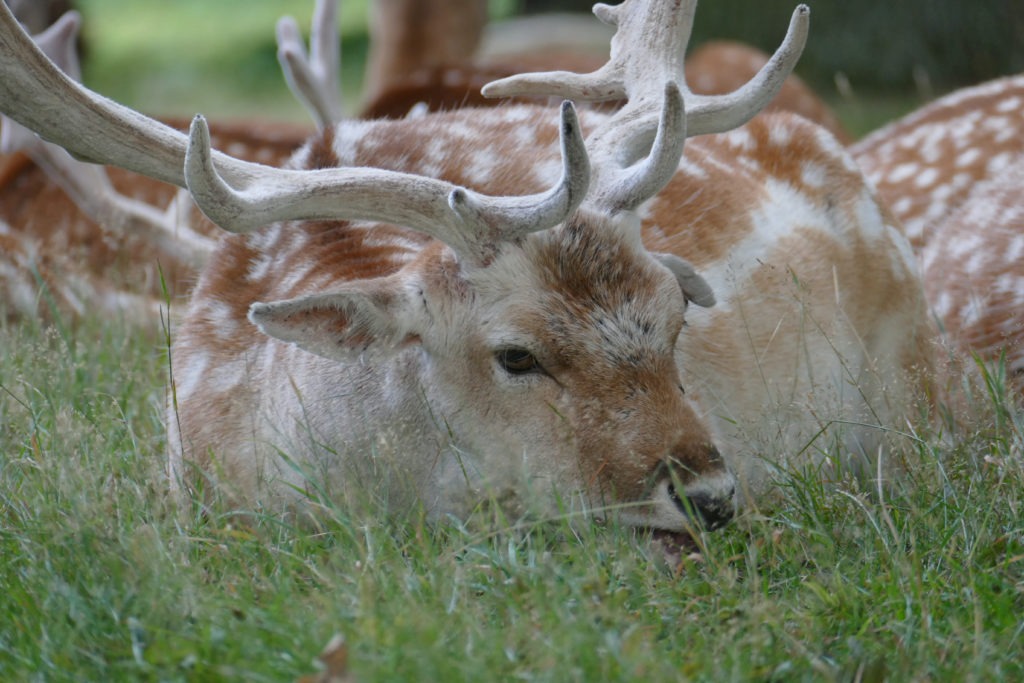 Some appraisal districts do have issues with high exotic populations. Since they are not native, exotics are considered livestock, not wildlife, by the state of Texas. High densities of exotics on a property could create questions about your primary use for wildlife management, potentially resulting in the loss of a wildlife management valuation. For most well-managed properties this shouldn’t be a problem but the primary use issue can come into play when there are far more exotics on the property than natives. If this is the case for you, it may be in your best interest to consider a switch from wildlife management to ag for an exotic livestock valuation. If you choose this route, it would essentially be the same as traditional ag for cattle or goats but with exotics as your “livestock” and a few key points would need to be considered/met:
Some appraisal districts do have issues with high exotic populations. Since they are not native, exotics are considered livestock, not wildlife, by the state of Texas. High densities of exotics on a property could create questions about your primary use for wildlife management, potentially resulting in the loss of a wildlife management valuation. For most well-managed properties this shouldn’t be a problem but the primary use issue can come into play when there are far more exotics on the property than natives. If this is the case for you, it may be in your best interest to consider a switch from wildlife management to ag for an exotic livestock valuation. If you choose this route, it would essentially be the same as traditional ag for cattle or goats but with exotics as your “livestock” and a few key points would need to be considered/met:
- Exotic animal operations raise the animals for the production of meat or other commercially viable products such as leather, feathers, or byproducts used in cosmetics or for medicinal purposes. Exotic livestock will need to be actively bred, sold, and/or traded
- Hunting is not considered a commercial product of exotics; it is considered a recreational activity. If hunting is the principle use of the exotic animals then the land will not qualify for agricultural use valuation
- Typically a minimum of 3 animal units are required, but can vary by county and animal
- Property should have adequate fencing suitable for livestock containment
- Water supply suitable for the number of stock
- This type of operation, depending on the species of animal, usually requires a “deer-proof” high fence.
If you have questions, or you’re interested in scheduling a camera or spotlight survey for your property, contact us at [email protected] or (512) 894-3479.
Wildlife Management Activity Reminder: Deer Surveys
By Kameron Bain, Landowner Account Manager
Maintaining a healthy deer herd that is balanced with available habitat does not happen by chance in most of Texas. It requires active management. Part of that proper management may include deer surveys.
While it would be ideal to be able to count every single animal on your property, it is virtually impossible. A survey is only an estimate, not a complete count, and can be higher or lower than the real population. Because of this, it is best to base your decisions on trends from multiple, consecutive years of survey data. Trends are more important than actual numbers from a single year, so plan to conduct surveys on a regular basis.
What options do I have?
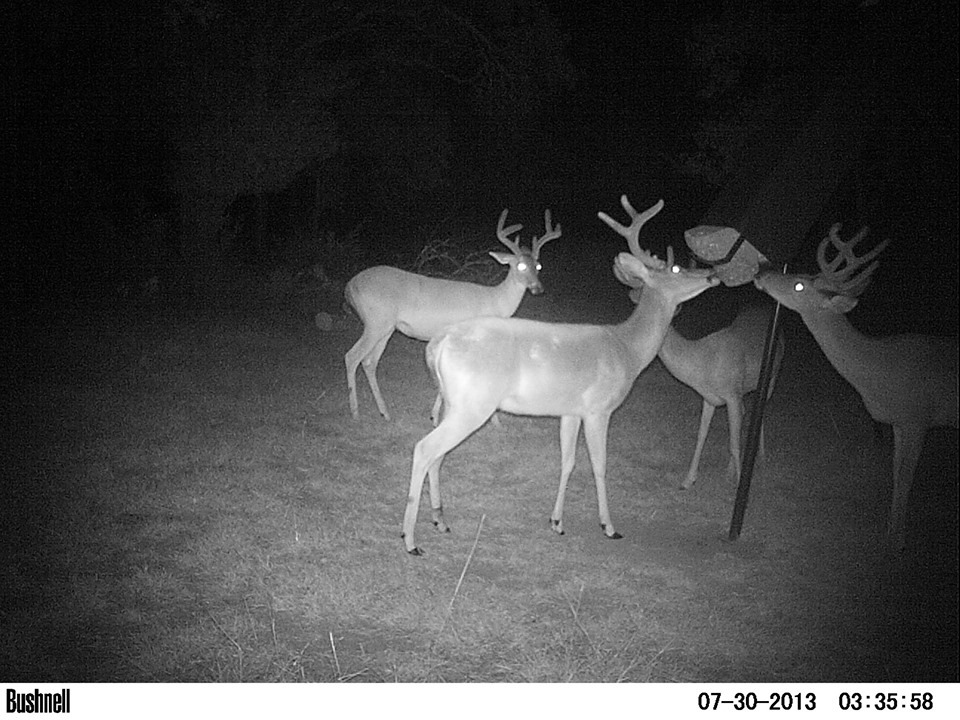 Spotlight Surveys: These are the familiar and “traditional” surveys for counting deer. The concept is simple – drive around at night with a spotlight and count all the deer you see – but there is more to it than that. The most common version is a strip-transect method, which just means you drive a set route and calculate how much land you can see from the vehicle, typically in 1/10th mile increments. If the survey route is set up properly, this method requires minimal training and can easily be conducted by landowners. A newer technique, called distance sampling, can be used on a driving spotlight survey as well. This version requires much more training and experience, but in the right situation it is a better choice for estimating populations.
Spotlight Surveys: These are the familiar and “traditional” surveys for counting deer. The concept is simple – drive around at night with a spotlight and count all the deer you see – but there is more to it than that. The most common version is a strip-transect method, which just means you drive a set route and calculate how much land you can see from the vehicle, typically in 1/10th mile increments. If the survey route is set up properly, this method requires minimal training and can easily be conducted by landowners. A newer technique, called distance sampling, can be used on a driving spotlight survey as well. This version requires much more training and experience, but in the right situation it is a better choice for estimating populations.- Camera Surveys: Inexpensive technology has made trail cameras, aka camera traps, widely available and popular for monitoring wildlife activity. Deployed properly, these cameras can also be used to estimate populations of deer. This method attempts to make an actual census (complete count) of bucks in an area and uses the ratio of males to females and fawns to females to estimate the rest of the population. The pictures make it easier to determine the age structure and quality of bucks. Because this survey requires 1 camera/150 acres of land, it is well suited to smaller properties (<500 acres), where spotlight surveys are often impractical. There is no limit to the size of the property for this method, it just takes a lot more cameras, and a lot more pictures to sort through, on larger properties. The set up and execution is fairly simple, though analyzing the pictures takes some training.
- Helicopter Surveys: These work best on very large properties with limited tall vegetation (South Texas, West Texas, and the Rolling Plains). Helicopter surveys may use distance sampling or strip-transect sampling much like spotlight surveys. In some cases, a complete count is attempted by covering the entire property, with the understanding that some deer will be missed. Obviously, a pilot is required, as is training at varying levels, depending on the technique, so these surveys are typically conducted by professionals.
In addition:
- Conduct herd composition counts. These estimates can greatly influence harvest recommendations. Doe:Buck ratios (sex ratios) indicate the potential for future population growth. Fawn:Doe numbers indicate the health of the herd, in terms of reproduction. Most survey techniques underestimate fawns as they do not show up on cameras as often as adults and may remain hidden during spotlight surveys. Sex ratios and fawn crops are best determined from incidental observations. Raw counts of bucks, does, and fawns seen during daylight hours while driving or sitting in blinds are an important supplement to spotlight or remote camera surveys as they help more accurately determine herd composition.
- Look at the vegetation on your property. Checking browse pressure on desirable vegetation is an excellent indicator of the deer population. If deer are eating a lot of low quality forage and there are no desirable shrubs to be found, then you have too many deer, regardless of what your surveys indicate.
- Keep harvest records. The condition of deer harvested says a lot about what is happening in your deer herd as well. If it is a lean year for rain but the deer are still heavy with fat, then your population is probably in pretty good shape. Recording field dressed weight, antler size, and body conditions are important. You should also age each deer to one of three categories – young (0.5-1.5), middle-aged (2.5-3.5), and mature (4.5+).
Deer surveys typically start in August and there is a limited window (August-October) in which to get them done and determine harvest recommendations before the general deer season starts.
You don’t have to be perfect at your Wildlife Management activities, but you (or someone you hire) do have to do them. If you need help or have questions please contact us at (512) 894-3479 or [email protected]
A Recap of the 87th Texas Legislative Session
By Shane Kiefer, Director of Ecological Services, Certified Wildlife Biologist and Registered Property Tax Consultant
 The 2021 Regular Legislative Session in Texas turned out to be fairly uneventful for open-space property tax valuation (ag, wildlife, timber, etc.) as the legislature had other priorities. Conservation issues are a whole different topic that deserves attention and we will try to provide you updates on interesting changes on that front in the future. Plateau tracked about 25 different bills that we thought might have an impact (positive or negative) on rural landowners this past session. Here’s a quick recap of three bills we watched that actually made it to law.
The 2021 Regular Legislative Session in Texas turned out to be fairly uneventful for open-space property tax valuation (ag, wildlife, timber, etc.) as the legislature had other priorities. Conservation issues are a whole different topic that deserves attention and we will try to provide you updates on interesting changes on that front in the future. Plateau tracked about 25 different bills that we thought might have an impact (positive or negative) on rural landowners this past session. Here’s a quick recap of three bills we watched that actually made it to law.
SB 1245 – This bill amends current law relating to the farm and ranch survey (FARS) conducted by the comptroller. The FARS helps set proper productivity values for open-space land (ag/wildlife). That’s the actual value on which your taxes are assessed, rather than the market value of your property. SB 1245 requires the comptroller to conduct the FARS, prepare an instructional guide, and provide an informational session to assist individuals in completing it. It also requires chief appraisers to distribute the guide to individuals that receive the FARS. The intent is to improve the reliability and completeness of the FARS to help ensure more accurate productivity values for each appraisal district. For those of you in wildlife management, your productivity value is fixed along with the classification of your land when it was previously in agricultural use, so this impacts everyone in 1-d-1 open-space appraisal.
HB 3833 – This bill encompasses several things but what is relevant to landowners in open-space valuation is that the rollback penalty no longer includes interest charges. If you change the use of your property to a non-agricultural use going forward, you will only pay 3 years of the difference in market value taxes and the ag value without interest. The rollback penalty was reduced from 5 years to 3 years last session (2019), and this bill further reduces the size of the penalty. Keep in mind that rollback doesn’t apply if you build a house for use as your residence homestead on your agricultural/wildlife property. The bill also standardized rollback across other special valuations (park and scenic use, public access airports) which were still stuck in the old “five years plus seven percent per year” law.
SB 63 – This law also makes changes across several parts of the property tax code. Of particular importance to landowners in open-space it requires more timely and detailed notice from the chief appraiser of a determination of an open-space application for agricultural/wildlife use. The chief appraiser must issue a determination within 90 days of application. If the chief appraiser requires additional information, they must request it within 30 days of the application date via written notice. If an application is denied, then the chief must inform the landowner no later than the fifth day after the determination and must fully explain each reason the application was denied. This bill also puts specific timelines on the Appraisal Review Board to schedule protest hearings.
If I missed something you think was important, let us know and we’ll look at covering it in a future edition. The upcoming special session(s) will be more focused, but we will be keeping an eye out for any bills that might affect landowners then and in the next regular session in 2023. Until then, please don’t hesitate to contact us if you have questions about your ag valuation, wildlife valuation, or timber valuation – call (512) 894-3479 or email [email protected].
Service Spotlight: Summer Webinars
Join us this summer for upcoming webinars presented by Plateau’s expert biologists and more!
 Wildlife Management Q&A for Plateau Clients: Tuesday, July 13th, 6:00-7:00 PM
Wildlife Management Q&A for Plateau Clients: Tuesday, July 13th, 6:00-7:00 PM
As a part of our landowner family, we want to be available to answer your questions about appropriate Wildlife Management activities, record-keeping strategies, county requirements and expectations, and more. Landowner Account Manager Kameron Bain and Tim Milligan with Landowner Services will be online for approximately an hour, answering pre-submitted and live questions from anyone who attends. Come to the webinar with your questions ready and get answers from a resource you can trust – Plateau Land & Wildlife Management.
Register
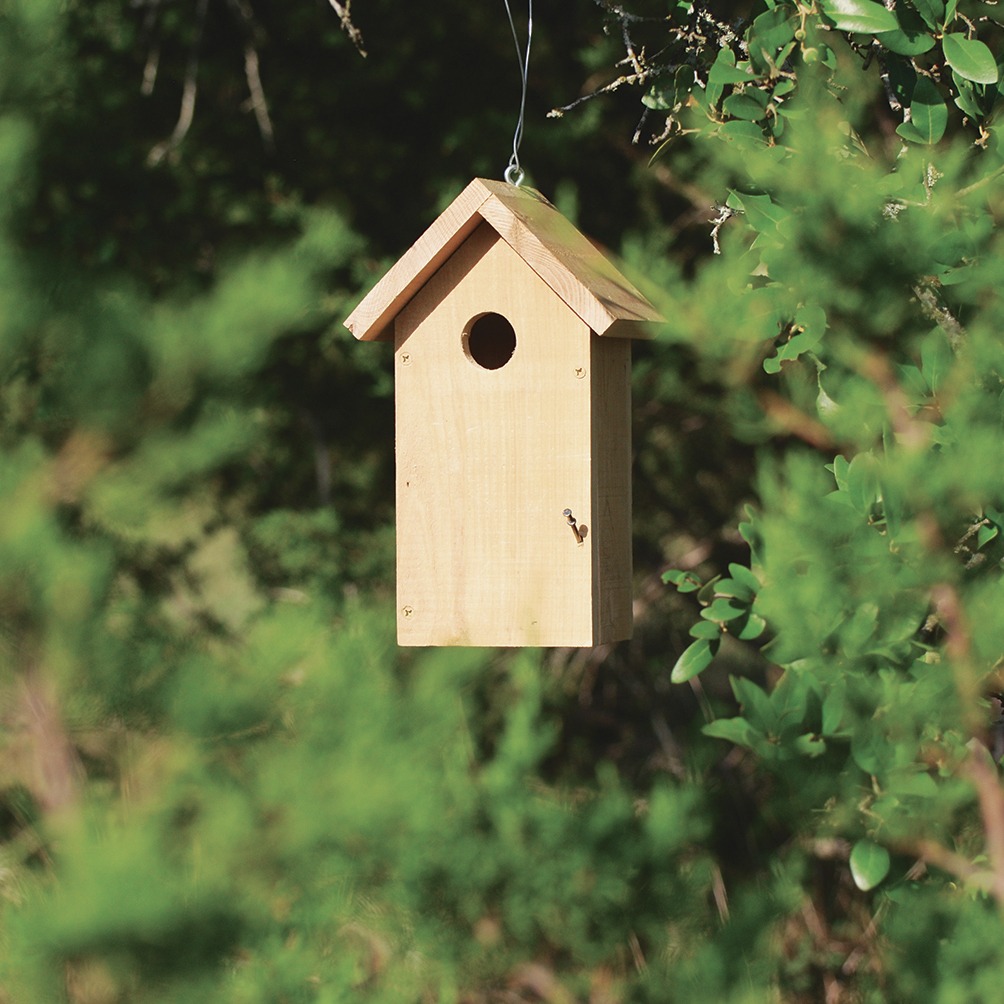 Small Acreage Management Techniques: Thursday, July 22nd, 6:00-7:00 PM
Small Acreage Management Techniques: Thursday, July 22nd, 6:00-7:00 PM
As fragmentation of Texas wildlands increases more and more landowners are struggling to manage wildlife on their small acreage property. During this one-hour webinar presented by Plateau Senior Wildlife Biologist, Tucker Slack, we will discuss different management techniques and activities that landowners can utilize to manage for several different wildlife species. Additionally, Tucker will cover the importance of wildlife management cooperatives and how they can benefit your management. Time will be provided at the end to address your questions.
Register
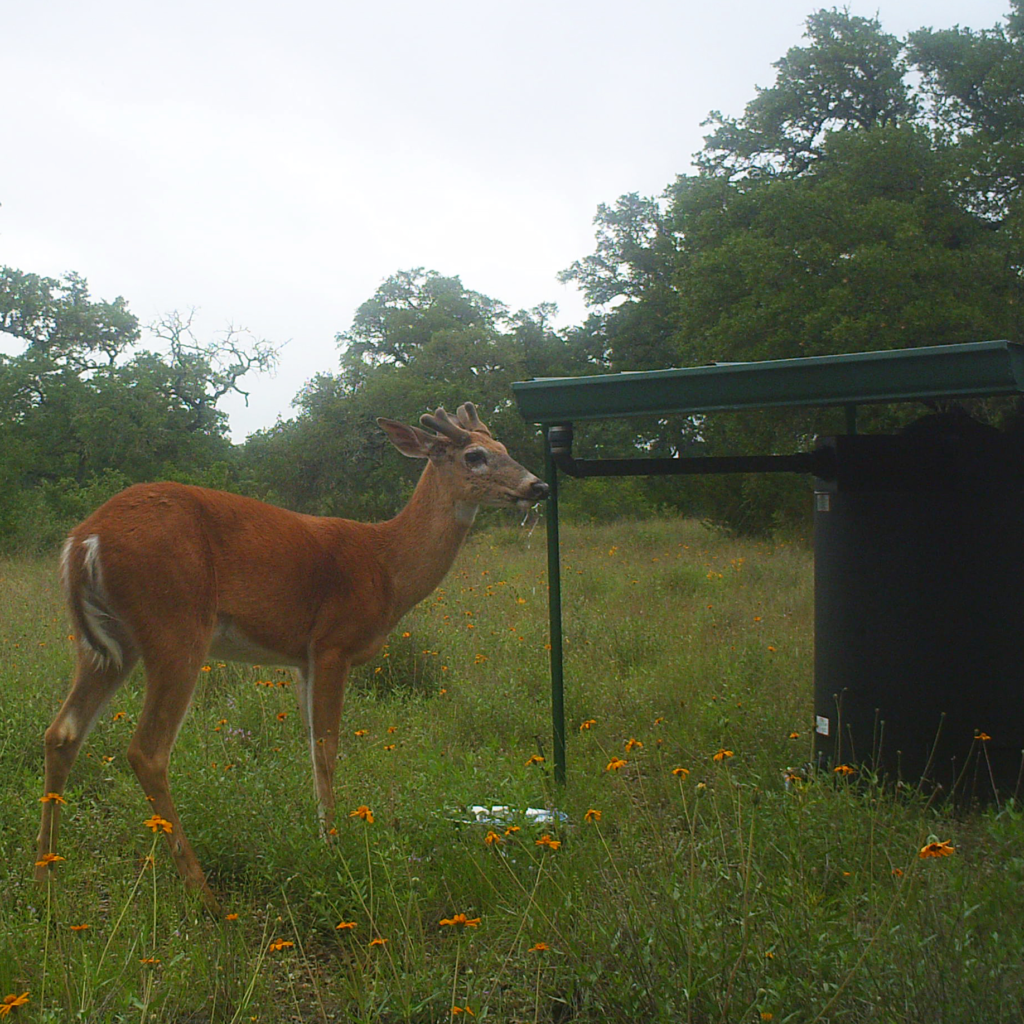 Water for Wildlife: Tuesday, August 24th, 6:00-7:00 PM
Water for Wildlife: Tuesday, August 24th, 6:00-7:00 PM
An important part of Wildlife Management, or managing for native Texas wildlife in general, is providing water for the wildlife on your land – especially during the hot summer months. During this one-hour webinar presented by Plateau Wildlife Biologist, David Riley, we will discuss ways to increase water retention on your land and how to provide supplemental water sources for that wildlife. Joining David, Braun & Gresham Attorney and Counselor Carly Barton will discuss legal considerations for damming water on your property. Time will be provided at the end to address your questions.
Register
Miss a date? Don’t worry! You can watch our on-demand webinars at any time by visiting our event directory, or catch up on June webinars here.
On-Demand Webinar: Wildlife Management Mid-Year Check In
Midyear is a good time to review your plan and confirm your expectations and goals. At halfway through the year, you should assess what activities have been accomplished, confirm adequate record keeping, plan the rest of the year, and get help if needed. This webinar covers the importance of getting started or keeping up with your activities at the mid-year point. We provide examples of activities well suited for after midyear, and how to set yourself up to never get behind again.
On-Demand Webinar: Birding Basics for Landowners
Whether you are in Wildlife Management or not, an exciting activity for many landowners is watching and identifying the various birds that frequent your property. In this one-hour webinar, Plateau Wildlife Biologist Danielle Belleny provides some basic insights and tools to help you get started birding! Danielle covers some basic behaviors, sounds, and appearances of birds in Texas. She also provides suggestions of native plants that will help attract and benefit birds on your property.
For questions or assistance registering for an upcoming webinar, please contact (512) 894-3479 or [email protected].
A Health Hazard Consideration When Buying & Selling Property
By Ryan Hagens with Braun & Gresham, PLLC
Many people in Texas dream of owning a ranch for hunting or having a secluded place to get away for the weekend. Whatever your reason for buying land, you never want to find out that there is a serious potential health hazard on the land you just bought. Unfortunately, this is what happened to one of our clients. After purchasing the property, the client found out that Anthrax was recently present in the area. The seller failed to disclose this to them. Not surprisingly, they were horrified and concerned for their health and safety. They wanted to know if a seller had a duty to disclose the presence of Anthrax and, if so, what they could do about it now.
What is Anthrax?
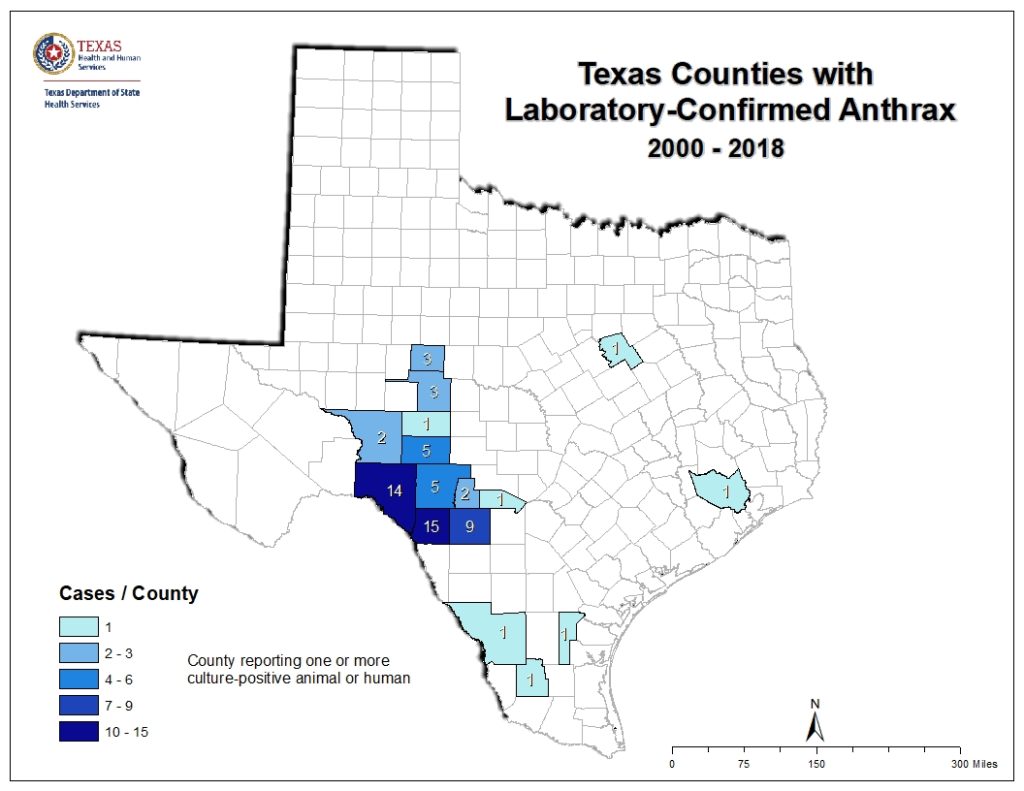 Anthrax or Bacillus anthracis is a bacteria that naturally occurs all over the world. Anthrax lies dormant in the ground as a spore. The right mix of weather conditions allows these spores to come to the surface and collect on vegetation where animals may ingest them. The animals most susceptible to Anthrax are herbivores such as deer, livestock, exotic livestock, horses, swine, and yes, humans. Areas that have wet winters and springs, followed by dry summers, are especially susceptible to Anthrax. Due to the favorable conditions in Texas, an outbreak of Anthrax can occur almost anywhere in the state. However, most Anthrax outbreaks occur in what people in Texas refer to as the Anthrax Triangle. The Anthrax Triangle is located in the southwest portion of the state, encompassing Crockett, Edwards, Kinney, Maverick, Sutton, Uvalde, and Val Verde counties.
Anthrax or Bacillus anthracis is a bacteria that naturally occurs all over the world. Anthrax lies dormant in the ground as a spore. The right mix of weather conditions allows these spores to come to the surface and collect on vegetation where animals may ingest them. The animals most susceptible to Anthrax are herbivores such as deer, livestock, exotic livestock, horses, swine, and yes, humans. Areas that have wet winters and springs, followed by dry summers, are especially susceptible to Anthrax. Due to the favorable conditions in Texas, an outbreak of Anthrax can occur almost anywhere in the state. However, most Anthrax outbreaks occur in what people in Texas refer to as the Anthrax Triangle. The Anthrax Triangle is located in the southwest portion of the state, encompassing Crockett, Edwards, Kinney, Maverick, Sutton, Uvalde, and Val Verde counties.
Do sellers need to disclose that Anthrax has been present on the land?
The short answer is, yes. Although, it is not that simple. Many people buy and sell land, and not everything gets disclosed to the buyers. The land may pass to many people between outbreaks, and only the original seller may have known of the Anthrax. The subsequent sellers who may not have known have no duty to disclose what they do not know. However, if the seller knew, the Farm and Ranch sale contract used in Texas specifically asks sellers to disclose any known health or environmental hazards. The contract requires sellers with knowledge of past or present Anthrax to disclose this information.
I bought land that has Anthrax. It was not disclosed. What now?
If you suspect or know that the seller intentionally failed to disclose the presence, past or present, of Anthrax, you have two options. You can immediately demand cancellation of the contract, request the money be returned, and the seller takes back the property. If the seller does not comply, you may file a lawsuit to cancel the contract. Alternatively, you may keep the land and file a lawsuit for damages. Texas law does not allow you to pursue both options. If you choose to keep the land, certain causes of action may be pursued, depending on the seller’s intention for not disclosing the presence of Anthrax. The potential causes of action to pursue against a seller are fraud, fraud by omission, and a Deceptive Trade Practices Act (DTPA) violation.
What do I do if I think my animals have Anthrax?
 To confirm an Anthrax infection, you will need to contact a licensed veterinarian to take blood samples from the animals. If the animals are wildlife, you will need to contact your regional division of the Texas Animal Health Commission, which can be found here: https://www.tahc.texas.gov/agency/contact.html. Once the veterinarian confirms the infection, the infected animals will need to be quarantined away from other animals. If any of the animals die, the body of the deceased animal will need to be incinerated to ensure the destruction of the bacteria. However, there is a high likelihood of reoccurrence in an area with previous infections. The infected animals may have spread the spores.
To confirm an Anthrax infection, you will need to contact a licensed veterinarian to take blood samples from the animals. If the animals are wildlife, you will need to contact your regional division of the Texas Animal Health Commission, which can be found here: https://www.tahc.texas.gov/agency/contact.html. Once the veterinarian confirms the infection, the infected animals will need to be quarantined away from other animals. If any of the animals die, the body of the deceased animal will need to be incinerated to ensure the destruction of the bacteria. However, there is a high likelihood of reoccurrence in an area with previous infections. The infected animals may have spread the spores.
If you have questions or would like more information, please contact Braun & Gresham at (512) 894-5426 or [email protected].
Field Notes: Pictures & Highlights of Properties in Wildlife Management
Ever wonder how Wildlife Management is benefiting landowners’ property and the wildlife that lives on it? Here are some photos and highlights, from Plateau’s field staff and game cameras, of successes and small victories our landowner customers are seeing on their property.
Hays County Property in Wildlife Management
Switching from Ag to Wildlife Management can benefit your land in a variety of ways. As seen in this photo, a Hays County property (on the left of the fence line) converted from traditional Ag to Wildlife Management which allowed the native grasses and forbs to re-grow. A greater diversity of plant life can serve as a food source for a variety of wildlife, as well as provide shelter for prey and ground-nesting critters. To learn more about how to make the switch to Wildlife Management, contact us at (512) 894-3479 or [email protected].

Killdeer Nest in Williamson County
This is a photo of a Killdeer nest found in Williamson County, captured by one of our staff during a Spring Breeding Bird Survey. These shorebirds are often found away from water, unlike most shorebirds, and nest in open areas relying on camouflage to hide the eggs. Adult Killdeer are notorious for displaying a “broken wing” while calling loudly to encourage predators to move away from their nest and chase them instead. Bird surveys can offer you insight into the variety of birds on your property and also qualify as a Wildlife Management activity under the census category. For more information, or to schedule a bird survey for your property, contact us at (512) 894-3479 or [email protected].
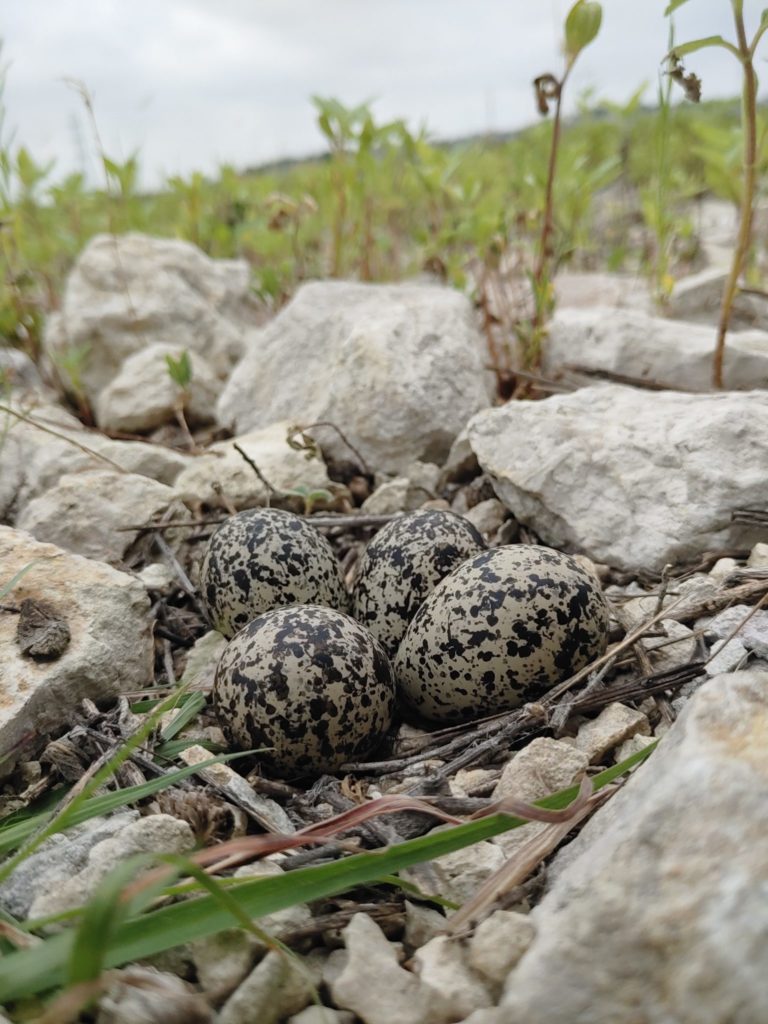
Giant Walking Sticks in Bastrop County
Giant Walking Sticks (Megaphasma denticrus) are quite large, with some females reaching up to 7 inches! This species shows sexual dimorphism where females are noticeably larger than males. Females produce upwards of 1,000 eggs with only a few surviving to adulthood. These particular walking sticks were spotted in Bastrop County, where 13 pairs and 8 individuals were found in one small hackberry! The Texas Giant Walking Stick is not poisonous, however, if you are handling be sure to be gentle. Walking sticks will use any means to thwart an attacker if they feel endangered.
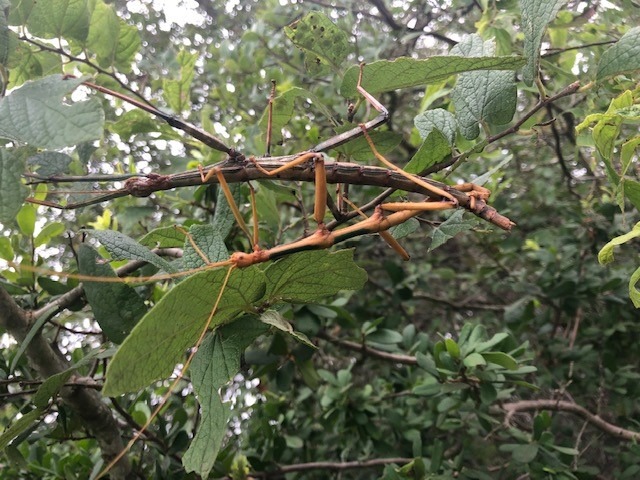
So many of you are out there doing great work. We appreciate you, and so do the native wildlife on your property and across Texas. Large or small, you are making a difference. Look for more great examples of wildlife and landowner successes and victories in upcoming Seasons Newsletters!
News for Texas Landowners
Emergency Order Issued to Restrict Movement of Deer from Breeding Facilities Where CWD has Been Detected
News Release by Texas Parks & Wildlife Department
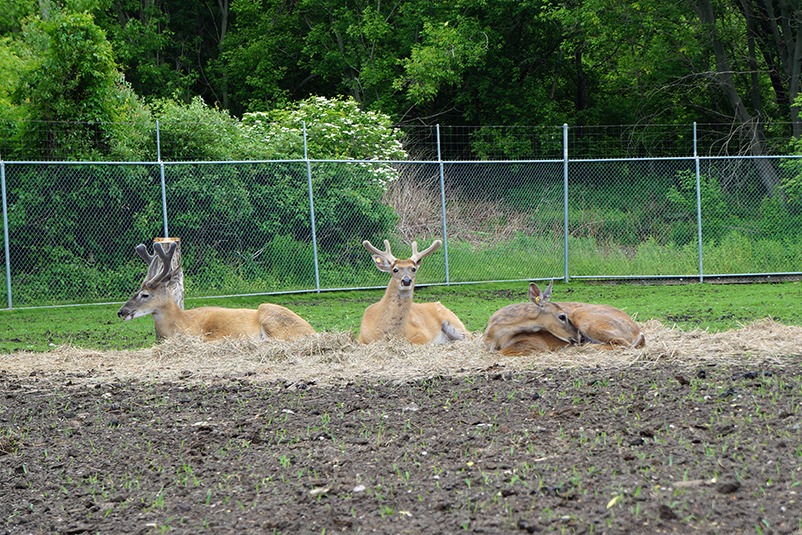
Texas Parks and Wildlife Department (TPWD) has issued an “emergency order” to impose additional movement and testing restrictions on deer breeding facilities that are affiliated with six deer breeding facilities where Chronic Wasting Disease (CWD) has been positively detected. Existing rules already restrict the movement of deer from 264 sites in 95 counties that are directly linked to these CWD-positive facilities, but further measures are necessary given the gravity of this situation.
TPWD and Texas Animal Health Commission (TAHC) are addressing risks and improving management strategies to protect big game resources from CWD in captive or free-ranging cervid populations. Both agencies recognize the need for full cooperation and partnership among government agencies, deer breeders, private landowners, hunters, conservation organizations and the general public in managing CWD in Texas…
San Antonio, Hill Country Drought Officially Over
Article by Brian Kirkpatrick for Texas Public Radio

The National Weather Service reports all of Bexar and surrounding counties and the Hill Country are no longer in drought conditions as of the end of May.
Forecasters said drought conditions started spreading west to east into Bexar County in October of last year.
Keith White of the National Weather Service reports more than 1 foot of rain has fallen at San Antonio International Airport since the end of April.
One weather observer in Scenic Oaks in Northwest Bexar County recorded more than 17 inches during the same time frame, he said…
Webinar Series Available to Help Texans with Feral Swine
Article by Kerry Halladay with Texas A&M AgriLife

The Natural Resources Institute, NRI, and the Texas A&M AgriLife Extension Service have released a two-part virtual webinar series in support of the Texas Feral Swine Eradication and Control Pilot Program.
“The series was created to provide assistance to producers and the public as part of the educational component of the feral swine pilot program,” said Josh Helcel, project coordinator with NRI and one of the creators of the webinar series.
“Many of the restrictions in place related to COVID-19 have now eased, but some folks may still be reluctant to attend educational workshops in person,” Helcel said. “Education on wild pig management is still very much needed across our state. We wanted to provide an online option that will also benefit program participants in our more remote project areas…”
Conservation Practices Earn Landowners Top Honors
Article by Jessica Domel for Texas Farm Bureau
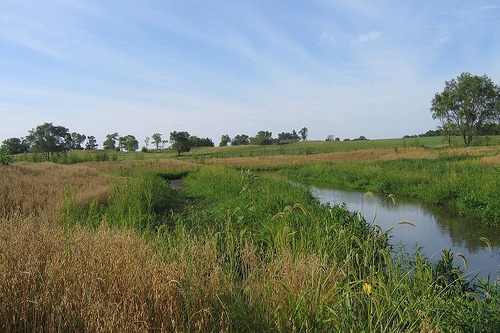
Six ranches and a cooperative are being recognized by the Texas Parks and Wildlife Department (TPWD) for their excellence in natural resource management and stewardship.
San Pedro Ranch, near Carrizo Springs, was awarded the Texas Leopold Conservation Award—the highest honor for land conservation.
The ranch’s owners, Joseph Fitzsimons and Pamela Fitzsimons Howard and their families, were honored with the award at TPWD’s Lone Star Land Steward Virtual Award Banquet May 27.
According to TPWD, the family’s conservation efforts began with the Fitzsimons’ father, Hugh Fitzsimons Jr., who embraced a holistic approach at the ranch back in the 1970s…
New Monarch Butterfly Conservation License Plate Available for Texas Drivers
News Release by Texas Parks & Wildlife Department

The Texas Parks and Wildlife Department (TPWD) will be launching the long-awaited Monarch Butterfly conservation license plate on June 21 that will raise money to help conserve monarch butterflies and other native Texas, non-game, at-risk species.
“The monarch butterfly is a species that is beautiful and iconic in that it is one of nature’s great migration stories,” said John Davis, TPWD’s Wildlife Diversity Program Director. “This species migrates through Texas from Mexico in the spring making its way to the northern extremes of the U.S. and into Canada, then reverses that feat in the fall to overwinter in Mexico. This great migratory story is in jeopardy with the overwintering population experiencing steep declines in the last decade. By adding the monarch to our family of plates, we hope to increase support for this beautiful migration event and through our conservation efforts, brighten the future for this, and many other species…”



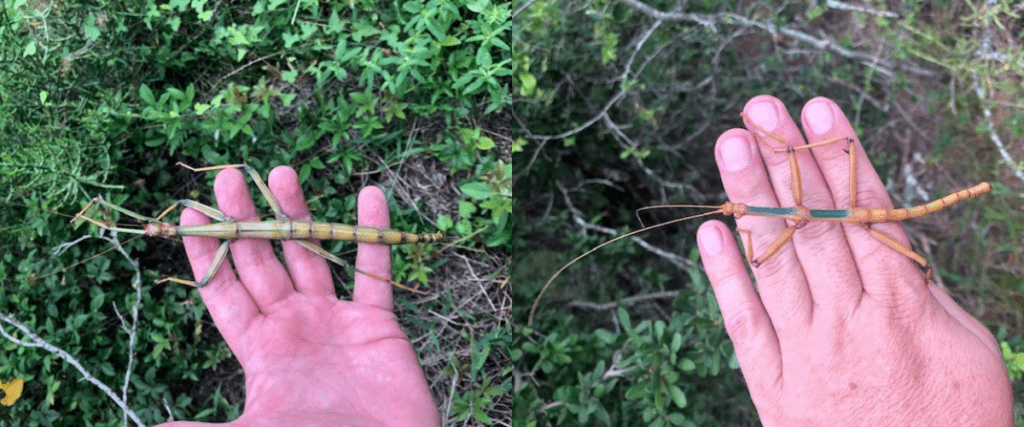



Sorry, the comment form is closed at this time.